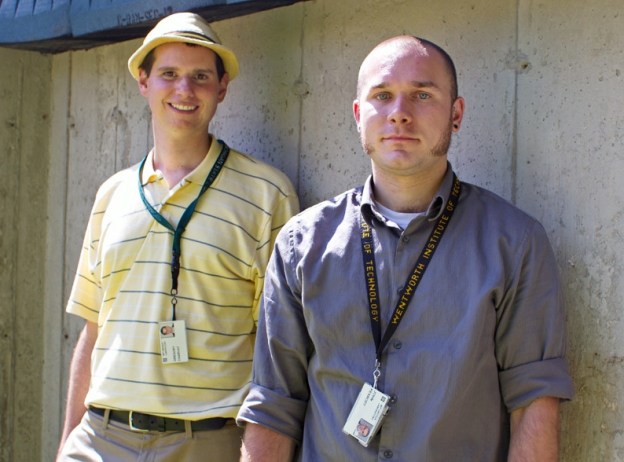
Our most poignant boyhood fantasy just came true: Researchers at MIT’s Lincoln Laboratory announced today that they have created a new radar technology that allows user to see through solid concrete walls. Really.
As MIT news officer Emily Finn explains in the official announcement, radar “sees” differently than eyes see. Whereas eyes use light waves to view the world, radar can interpret surroundings using radio waves that bounce off targets.
The new technology, which was developed to help the military with urban warfare by researchers Gregory Charvat and John Peabody (above), works by shooting a small amount of radiation through the target wall. Only a tiny remainder (about 0.6 percent) of the radiation makes it through the wall. If any people (or similar entities) are behind the wall, the radiation that makes it to the other side is then bounced back through the wall. Once again, about 99.4 percent of that radiation is blocked. But the remaining amount is enough for a radiation receiver to give an “instantaneous picture of the activity on the other side.” Inanimate objects, like cars, chairs or other buildings, are filtered out of the images.
Now, peeping Toms, don’t put on your trench coats just yet. The images supplied by the technology are quite vague-looking, and get increasingly opaque as the thickness and density of the wall increases; the pictures look like thermal imaging, not photography.
According to Charvat, X-ray would likely work better. But because of health issues related to X-ray radiation, he and Peabody decided to use microwave radiation instead.
“We use microwave technology that’s about as powerful as a cell phone, so it’s very weak,” Charvat told CNN. “So, microwaves work. It’s not ideal, but it gets the job done.”
While the technology is intended for use by the military, privacy advocates are concerned about its implications for civil liberties.
“Technology is developing at a rate that far surpasses Congress’ ability or willingness to adapt our laws to ensure that ordinary people are protected from the vast new powers these tools provide to the government,” Kate Crockford, privacy right coordinator for the ACLU of Massachusetts, told CNN. “This is an alarming trend, and this case is a perfect example of it. We urge lawmakers to get ahead of the curve to protect our privacy before it is too late.”
Watch a video of Charvat and Peabody explain their barrier-penetrating radar technology below:
[Image via Melanie Gonick, MIT]


